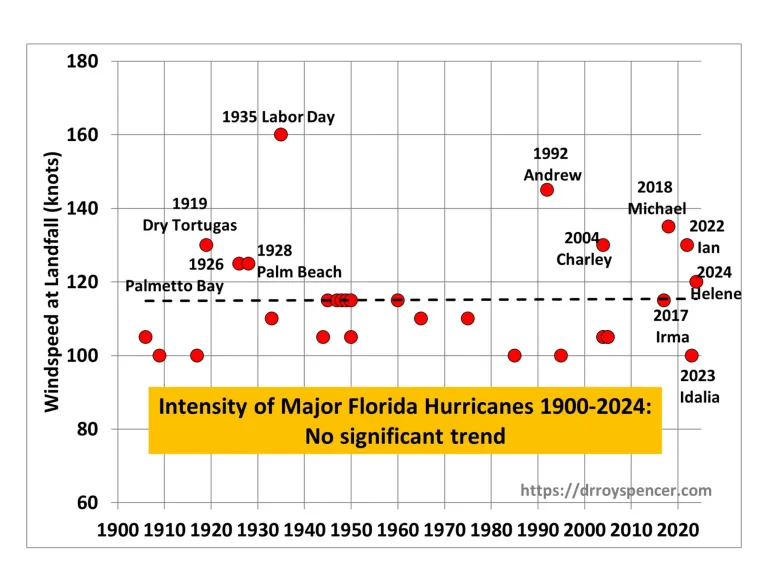The prolonged drought of landfall hurricanes during the global warming era has been a sore spot for the Climate Chicken(s) Little. Regular readers know this and have come here regularly to reload their narrative blow torches for battles in the multi-platformed, not always social internet media universe.
A search for Hurricane produces nearly 300 results.
And while 2024 still hasn’t lived up to its’ springtime per-season hype, Helene reminded us of decades past when hurricanes had balls (see how gender-fluid that was?). Milton was looking meaner but appeared to be losing some energy as it got closer to people and things that were not to be found anywhere on the Florida Peninsula fifty years ago, a place almost devoid of any large populations just a century past.
The ‘Grok is an Amazon Associate – You can support us by checking out today’s Deals
As I’ve been known to report about severe flooding in Vermont, it has a long non-CO2-narrative-encumbered history, and if you build where it floods, you will get flooded out. So, here comes Milton and the people who couldn’t bring themselves to mention – let Aloe explain why more CO2 leads to fewer hurricanes (hint: there’s no connection) – insisting things that simply are not true, the truth being the last thing modern Machine journalists have an interest in reporting.
As usual, we are here to help or find help.
The problem with human perception of such things is that the time scale of hurricane activity fluctuations is often longer than human experience. For example, a person born in the 1950s would have no memory of the beating Florida took in the 1940s from major hurricanes (a total of 5). But they would have many memories of the hurricane lull period of the 1970s and 1980s, each decade having only one major hurricane strike in Florida. Then, when an upswing in hurricane strikes occurs, it seems very unusual to them, and they assume that “hurricanes are getting worse”.
Another problem is that any statistics for an area as small as Florida, even over 100+ years, will be pretty noisy. Landfalling hurricanes for the eastern U.S. would be a better metric. And statistics for the entire Atlantic basin would be even better, except that satellite coverage didn’t start until the 1970s and hurricane intensity in remote areas before then would be poorly measured (or not measured at all).
Since a picture can speak some number of words (it used to be a thousand, but that might change with inflation), here’s a picture of a graph.

Milton isn’t going to change this. The top landfall wind speed given today’s estimate (always subject to change) is in the Helene to Ian range. Milton is a cat five right now but is expected to lose energy before the eye lands (est. Cat 3). It’ll still be awful. Devastating in some respects. Florida has added all sorts of people and infrastructure since its hurricane drought years in the 1970s and 80s when we had lower atmospheric CO2 levels. Decades prior, that was busier, and we had even less.
Anyone whose mind is not ideologically addled by scientism or softened by overexposure to network news will be able to see that.
Math is hard, but this isn’t. And if you ignore the hyperbolic poo-flinging news monkeys (poo being, in this example, airborne BS), you could have the climate/weather equivalent of a road to Damascus moment, and you don’t have to change your name to Paul.
Do not believe the false “profits” of climate doom. They are, as is so often the case, wrong again.
